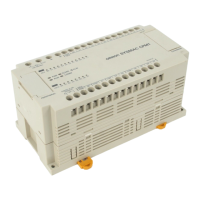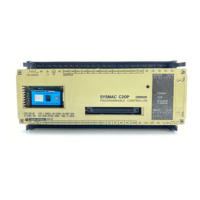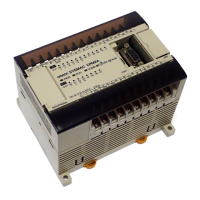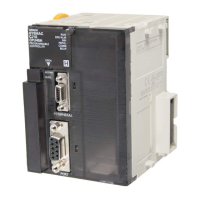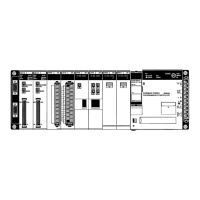!
45
ating an I/O verification error. Dummy I/O Units are available to fill slots for
future use or to replace Units that are no longer needed (see
Word Reserva-
tions
, below).
There are two ways, however, to change the I/O table registered in memory.
One is to allocate words to a slot that is not currently being used. This meth-
od is described below in
Word Reservations
.
The other way is to perform the I/O Table Registration operation again. When
this is done, all I/O words will be reallocated according to the Units mounted
to the Racks at the time. If the number of words allocated to any one slot
changes, all word allocations past that slot will also change, requiring that the
program be changed to allow for this.
Sometimes program changes can be avoided when a Unit is removed from a
Rack or you know that you are going to have to add a Unit later by reserving
words. Although designed to enable slot reservations for future use, a slot
reservation can be left permanently to prevent what could be extensive pro-
gram changes.
Caution Always be sure to change word and bit addresses in the program whenever a
change to Units on a Rack affects word allocations. Failure to do so may cause
improper I/O operations.
Words can be reserved at a certain slot for future use either by mounting a
Dummy I/O Unit to the slot before performing the I/O Table Registration op-
eration or by performing an I/O Table Change operation after performing the
I/O Table Registration operation.
A Dummy I/O Unit provides settings to designate word types (input or output)
and length (one, two, or four words). After I/O Table Generation has been
performed and a Dummy I/O Unit has been allocated the words designated
by these settings, it can be replaced at any time with a Unit that requires the
same type and number of words, e.g., if a Dummy I/O Unit is set for two input
words, it can be replaced with any 24- or 32-point Input Unit or any other Unit
that requires two input words.
Once an I/O table has been registered, it can be changed using the I/O Table
Change operation described in
CVSS/SSS Operation Manuals
. This opera-
tion can be used to reserve up to four input words, output words, or non-de-
fined words at a time. The I/O Table Change operation must be performed
after the I/O Table Registration operation. If I/O Table Registration is re-
peated, all word reservations will be cancelled, and I/O Table Change will
have to be repeated.
3-3-2 Work Areas
There are two Work Areas available in PC memory. Words and bits in the Work
Areas can be used in programming as required to control other bits, but are not
used for direct external I/O. Other bits and words in the CIO Area which are not
being used for their intended purpose can also be used as work words and work
bits. Actual application of work bits and work words is described in
Section 4
Writing Programs
.
Word Reservations
CIO (Core I/O) Area Section 3-3
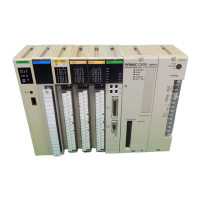
